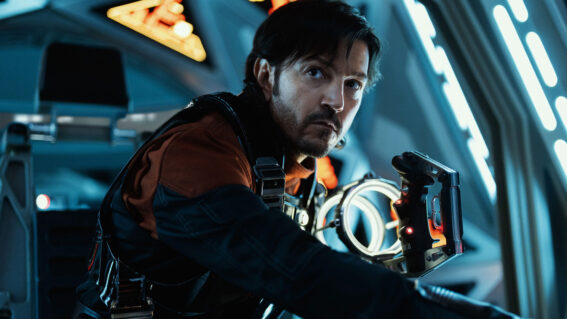All aboard to Neverland: the best and worst Peter Pan flight scenes
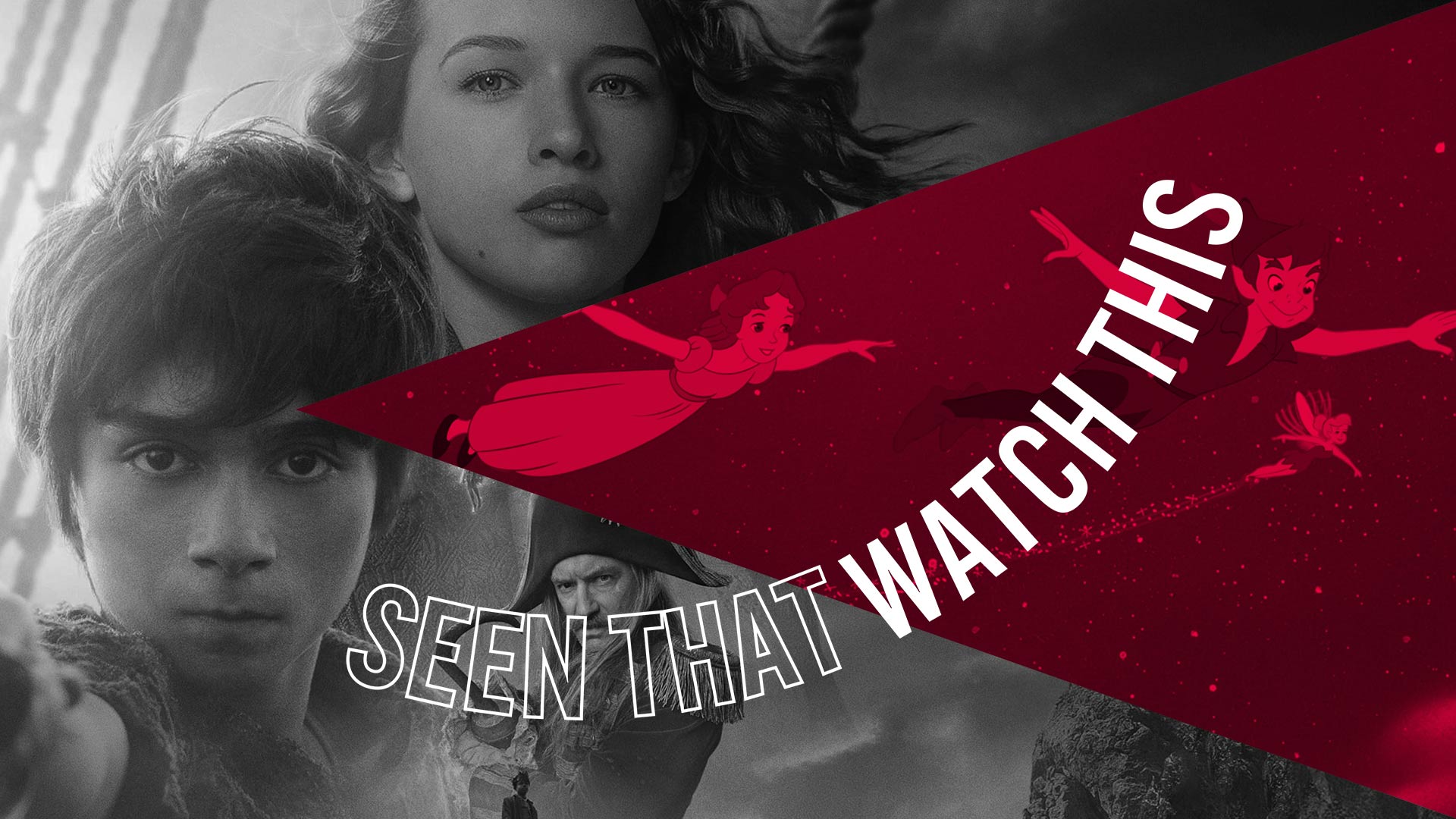
Peter Pan & Wendy features the best “flying to Neverland” sequence yet. But how do other Peter Pan movies compare? For his weekly column Seen That, Watch This?, critic Luke Buckmaster presents a crash course in happy thoughts and fairy dust.
Peter Pan stories are nothing without trips to Neverland—the iconic fairytale island famously reached by travelling to the “second star to the right, and straight on till morning.” Those directions are a smidge vague, however, and miss other essential elements: namely the provision of fairy dust. This of course is provided by old mate Tinkerbell, who’d make a roaring trade if she realised she could charge people for it (also called “drug dealing”).
The recent arrival of Peter Pan & Wendy is cause to celebrate, directed richly and uncynically by David Lowery, with an atmospheric flair both nostalgic and visually inventive. From the outset Lowery shows a reluctance to cut, his camera exploring the home of Wendy and her younger brothers in smelly old London, before the arrival through the window of you-know-who. When the characters take off for Neverland, flying through the dim night sky, it’s a truly lovely moment, executed with grace and aplomb.
In my review of the film, I noted the significance this part of the story has (being “a classic example of liminal space…connecting one world to the next”) and declared this scene “the best flying to Neverland sequence yet.” So, now that we’ve covered the best, what about the rest? Here’s how five other Peter Pan movies depict this moment.
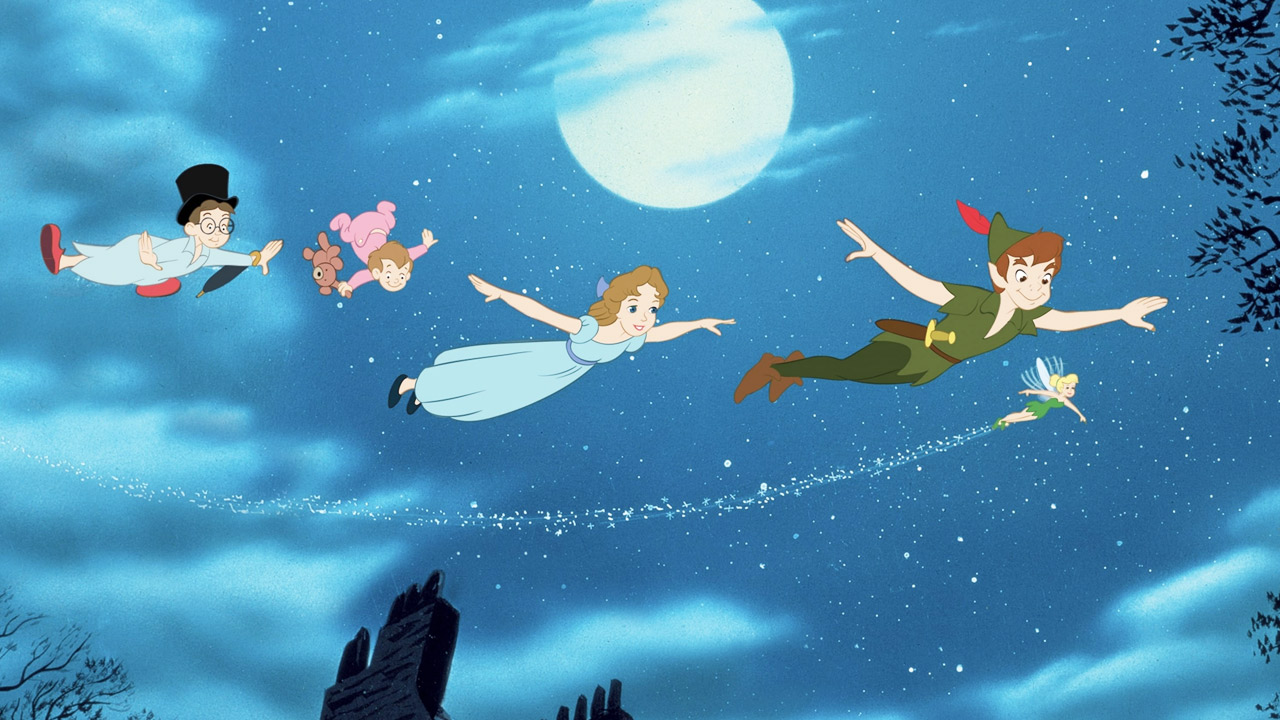
Peter Pan (1953)
Disney’s 1953 animation is probably the most famous Peter Pan adaptation, and of course far from the most daring. In this version a rather elf-like Peter has a very patchy memory: so sure, he’s eternally young, but it’s a shame about that very early onset of dementia. When Wendy asks how they get to Neverland, Peter says “fly of course,” clearly having forgotten both how to get there and how to fly. After some procrastinating, he declares all you need to do to fly is “think of a wonderful thought.” When the others try that and it doesn’t work, Peter admits he forgot about the fairy dust.
Properly sprinkled with the good stuff by Tinkerbell, the kids exit the window and fly around to the sound of annoying cheerful voices on the soundtrack singing an awfully repetitive song (“you can fly, you can fly, you can fly!”). En route, Peter skirts across a lake and puts his feet on beautiful doves, using them as skis, which is kind of gross. This is a pleasant scene, overall, but it feels a little still and staid, lacking verve and energy.

Hook (1991)
Steven Spielberg’s take on Peter Pan robs the character of his one distinguishing feature: eternal youthfulness. Played by Robin Williams, this Peter has not only grown up but is a stressed-out, risk-averse, “time is money!” businessman. He returns to Neverland but not on his own terms: he’s lured back by Captain Hook, who kidnaps his children. A fittingly diminutive Julia Roberts arrives as Tinkerbell to help, reiterating the vague aforementioned directions (“second star to the right…”).
But when it comes to the important journey, Peter is out cold. Lying unconscious and wrapped in a rug, Tinkerbell does the heavy lifting (fairy dust makes everything light, maybe?) and flies him there herself. There’s a lovely shot of a snow-covered Westminster Bridge, where pixie dust falls on two canoodling lovers and lifts them into the sky. Spielberg cuts to higher in the air, a large twinkling star in a central position in the frame, before segueing to a dawning sun in Neverland. A magical journey the protagonist wasn’t even conscious to experience.
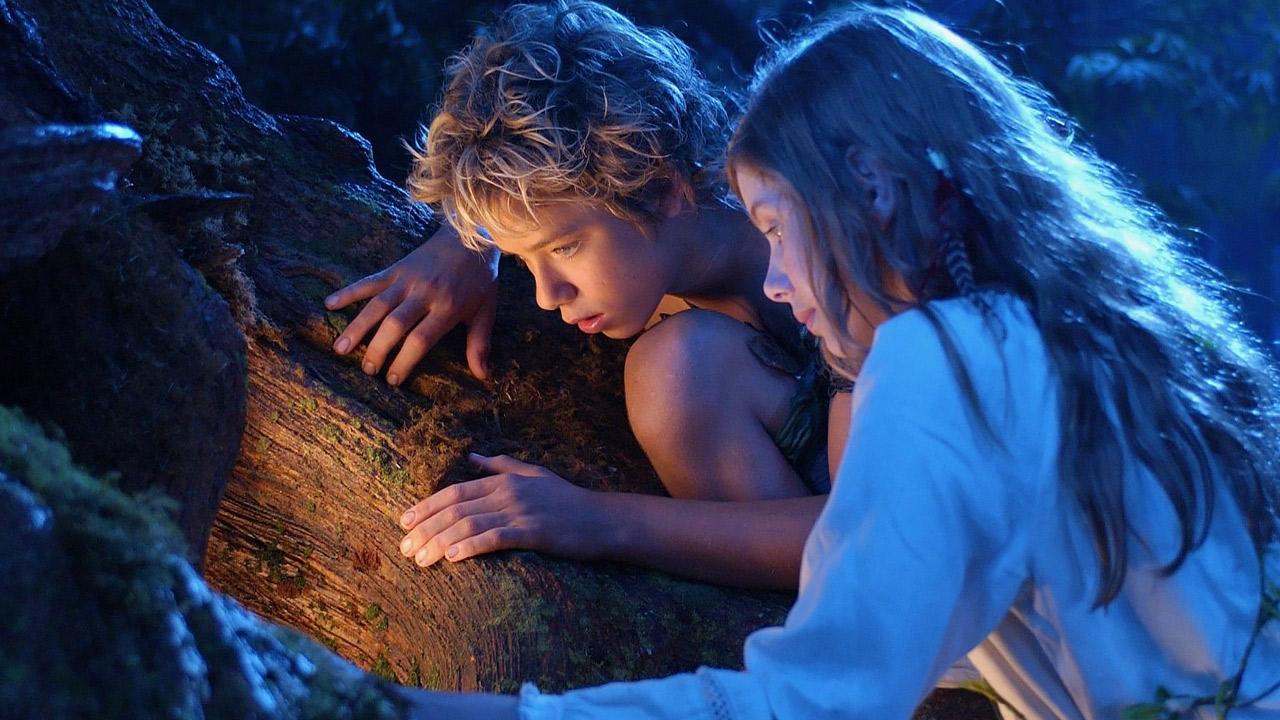
Peter Pan (2003)
Peter Pan is always a bit twerpy, but he’s especially unlikeable in P.J. Hogan’s sticky icky cheeseball of a movie. Here he looks summery and well-tanned—like he’s flown in from Summer Bay and stopped off at a costume shop. After an awkward exchange with Wendy, an inebriated-looking Tinkerbell arrives, splashing fairy dust around like a drunken sailor. When Peter advises Wendy and her brothers to “think happy thoughts,” one of her brothers, John, exclaims “swords, daggers Napoleon!”, providing evidence of what seems to be a very sick mind.
Hogan foolishly cuts away from the flying scene, disrupting its momentum to show the kids’ parents coming home. The group shoosh through the air and go down to street level, John taking the opportunity to steal a man’s top hat (I told you he was sick). They go further up into the sky before suddenly, weirdly, crossing over into outer space, the now-galactic tableau filled with shooting stars and colourful planets. This scene (and the film in general) looks and feels terribly fake, aesthetically as well as emotionally.
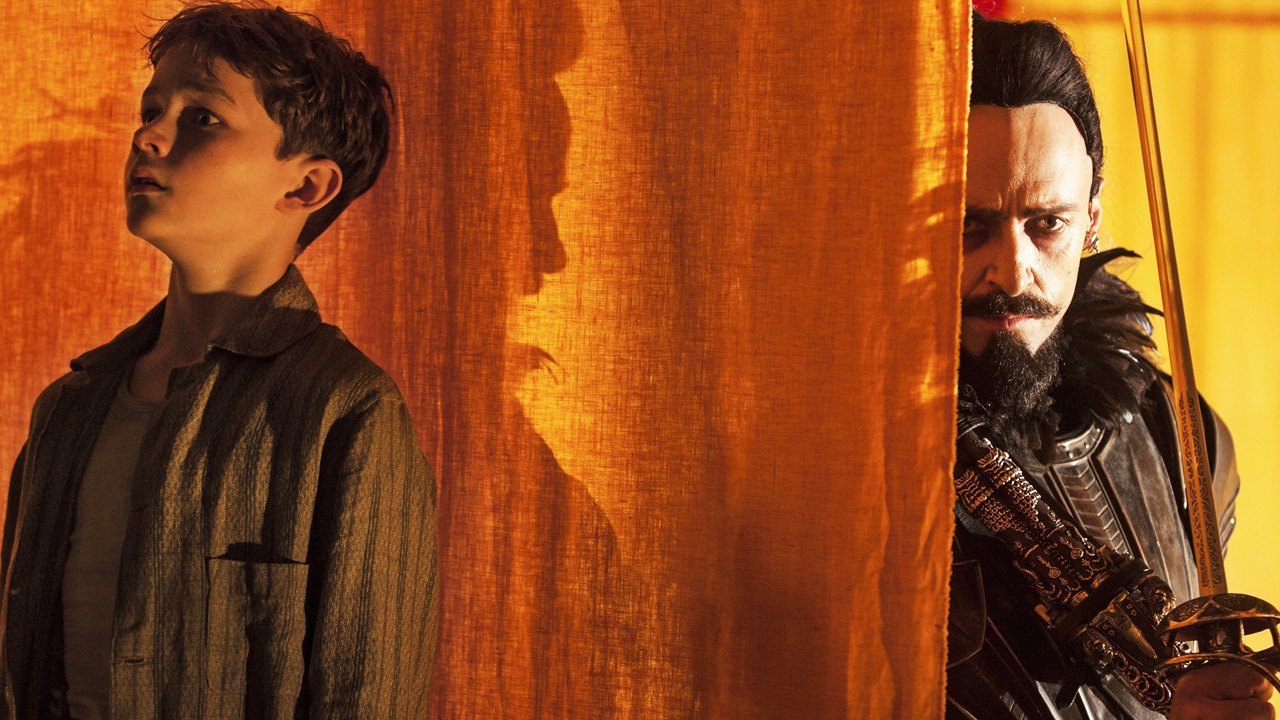
Pan (2015)
It’s custom for Peter Pan stories to open in dreary ol’ London, but the beginning of Joe Wright’s version channels downright misery. Peter is an orphan, stuck in an orphanage during World World II, thus instilling in him an extra desire to leave this world behind. The circumstances around his arrival on the mythical island have never been weirder. One evening Peter and fellow orphans awake to discover themselves being kidnapped by pirates and pulled onto their flying ship. As the ship heads back to Neverland, WWII fighter pilots attempt to shoot it down, adding some kablamo! spectacle, because why not?
No happy thoughts and fairy dust this time around: it’s fear, abduction and war. Things get even stranger upon arrival in Neverland, where giant bubbles of water filled with sea creatures—including alligators—float in the sky. And yet it gets stranger still: we encounter a huge population of dirty looking boys, ruled by Hugh Jackman’s Blackbeard, who looks like a goth Immortan Joe and commands them to sing Smells Like Teen Spirit. You read that right.

Wendy (2020)
Director Benh Zeitlin’s under-appreciated follow-up to Beasts of the Southern Wild features many bold reinventions, opening with close-ups of food and coffee being prepared in a rural American diner. Yep: this one doesn’t start in London. Nor does Peter Pan arrive through a window, and there’s no Tinkerbell and no flying. Wendy and her bros see Peter Pan running atop a rumbling freight train late in the evening, and, inspired by this badassery, jump on board to join him. Here the train is the magical passageway connecting grim reality to…a slightly less grim alternate world. This Neverland has an active volcano, and, like everything in this film, is infused with a great sense of sadness.
En route, Wendy delivers poignant narration reflecting on how “he says the world has no end. It goes on and on forever. Past the houses and the restaurants. Past all the billions of people who never dared to leave.” Zeitlin’s heavy-hearted treatment latches onto the idea of Peter Pan being a story not about eternal youthfulness but fear of ageing. The plot is frustratingly paced, but the film is touching and original.













